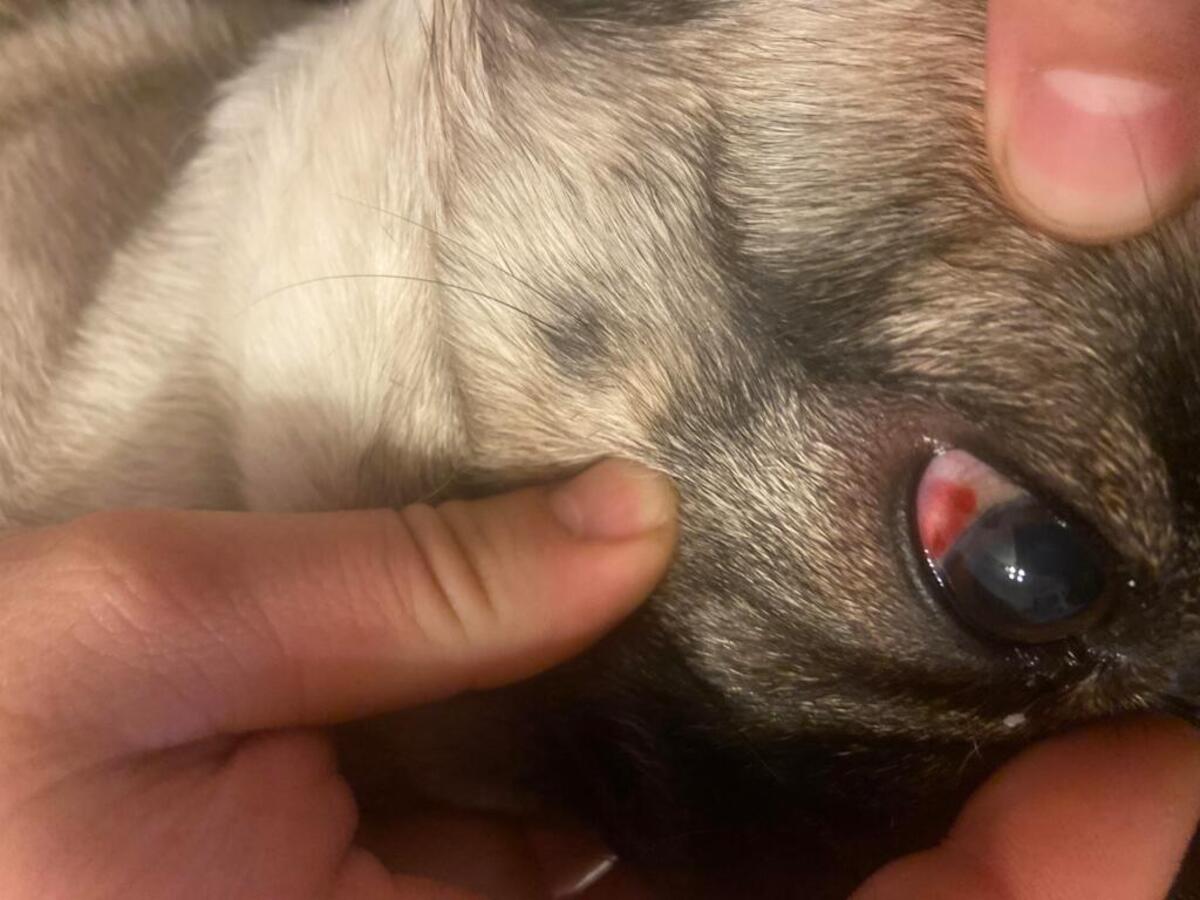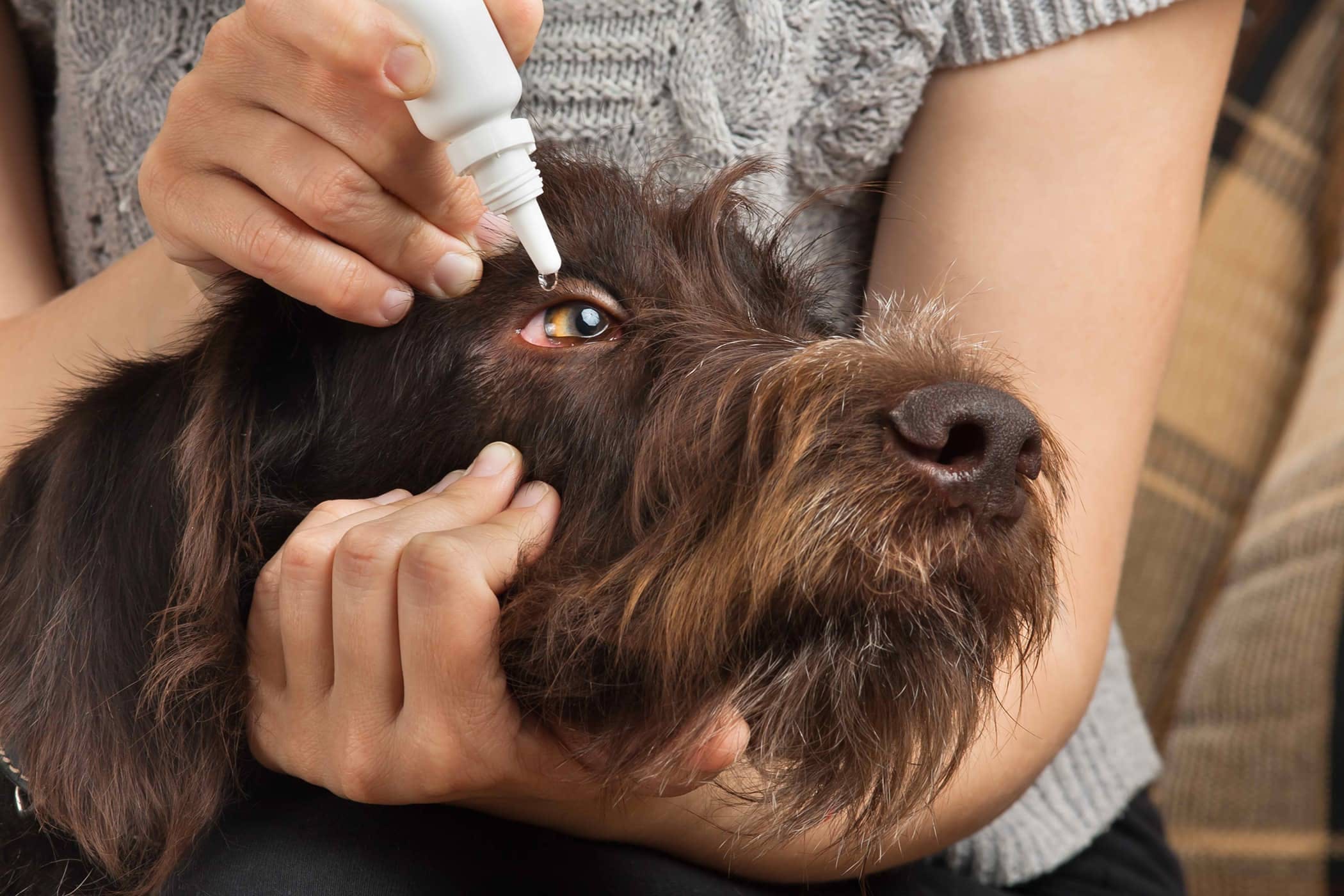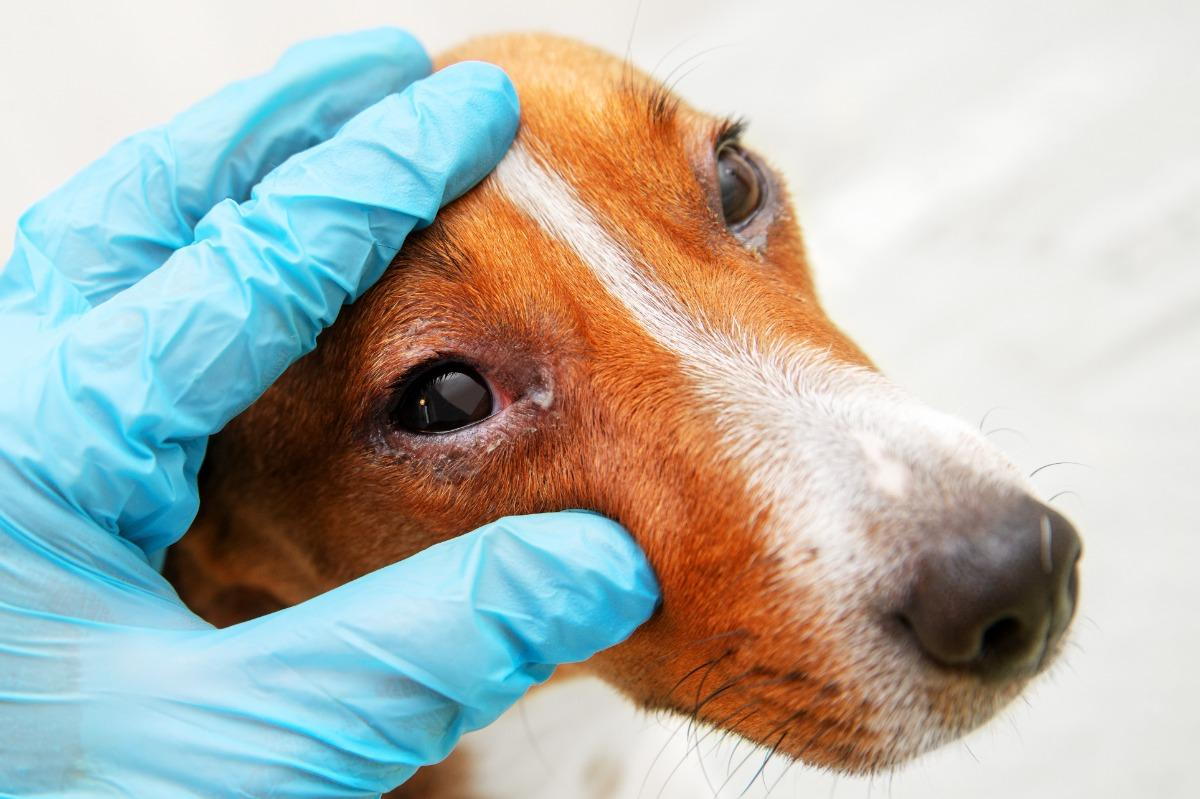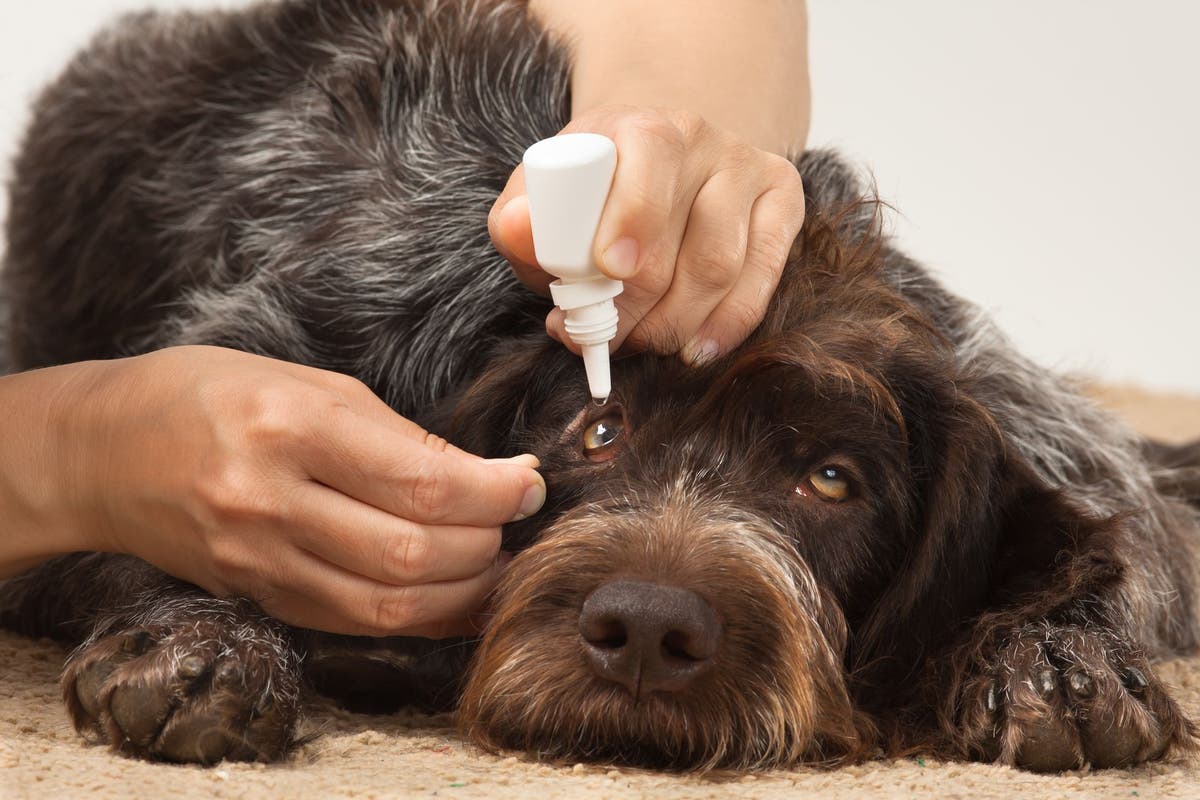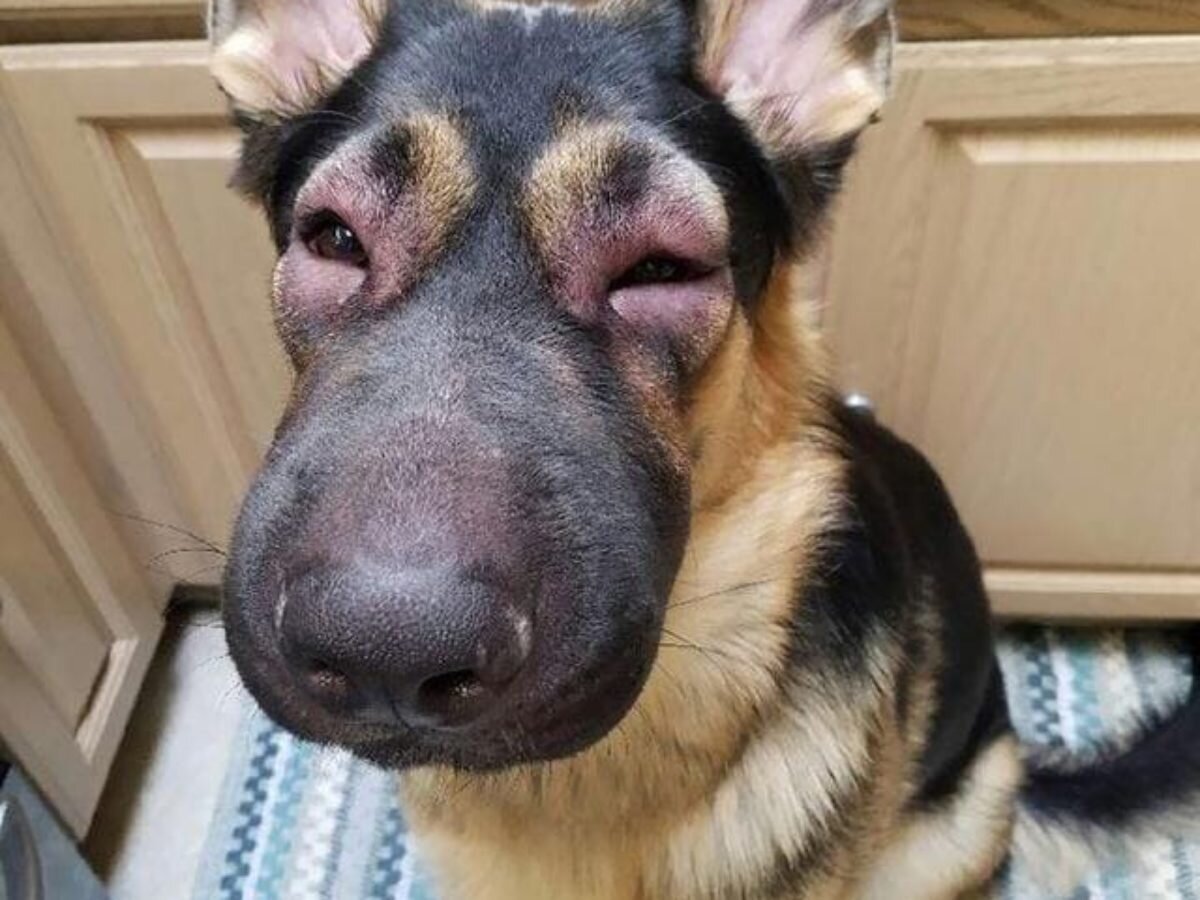Home>Health & Wellness>Common Health Issues>Eye and Ear Health>How To Treat A Dog With Eye Allergies


Eye and Ear Health
How To Treat A Dog With Eye Allergies
Published: February 12, 2024
Learn effective ways to treat your dog's eye allergies and maintain their eye and ear health. Discover expert tips and remedies for managing eye and ear allergies in dogs.
(Many of the links in this article redirect to a specific reviewed product. Your purchase of these products through affiliate links helps to generate commission for Pawsomeoldies.com, at no extra cost. Learn more)
Table of Contents
Introduction
Welcome to the comprehensive guide on understanding and addressing eye allergies in dogs. Just like humans, dogs can also experience discomfort and irritation due to eye allergies. As a responsible pet owner, it's essential to be well-informed about this common condition to ensure the well-being of your furry companion.
In this article, we will delve into the various aspects of dog eye allergies, including their symptoms, causes, diagnosis, treatment, and prevention. By gaining a deeper understanding of this issue, you'll be better equipped to recognize the signs, provide appropriate care, and take proactive measures to safeguard your dog's ocular health.
Let's embark on this enlightening journey to unravel the intricacies of dog eye allergies and empower ourselves with the knowledge to support our beloved canine friends.
Read more: How To Treat My Allergies To Dogs
Understanding Dog Eye Allergies
Dog eye allergies, also known as allergic conjunctivitis, refer to the inflammation of the conjunctiva, the thin membrane that covers the inner surface of the eyelids and the whites of the eyes. Allergies in dogs can be triggered by various environmental factors, such as pollen, dust, mold, and certain chemicals. Additionally, food allergies can also manifest as eye-related symptoms in some dogs.
When a dog is exposed to an allergen, the immune system may overreact, leading to the release of histamines and other inflammatory substances. This immune response can result in red, itchy, and watery eyes, causing significant discomfort for the affected canine.
Understanding the specific allergens that affect your dog is crucial in managing their eye allergies. Common environmental allergens include grass, tree, and weed pollens, as well as dust mites and mold spores. Identifying and minimizing your dog's exposure to these allergens can help alleviate their symptoms and improve their overall ocular health.
It's important to note that certain breeds may be more predisposed to developing eye allergies. Breeds with prominent or protruding eyes, such as Pugs and Bulldogs, may be more susceptible to eye irritation and allergies due to their eye anatomy. Additionally, dogs with a history of skin allergies or atopic dermatitis may also be prone to developing eye allergies.
Understanding the nature of dog eye allergies involves recognizing the cyclical nature of the condition. Allergy seasons, which vary depending on the specific allergens, can exacerbate symptoms in affected dogs. Furthermore, chronic or recurrent eye allergies can lead to secondary complications, such as bacterial infections, corneal ulcers, and discomfort that may impact the dog's overall well-being.
By comprehending the underlying mechanisms and triggers of dog eye allergies, pet owners can take proactive measures to mitigate the impact of allergens on their dog's ocular health. This understanding forms the foundation for effectively managing and addressing the symptoms of eye allergies in dogs, ultimately enhancing their quality of life.
Symptoms of Dog Eye Allergies
-
Redness: The whites of the eyes may appear red or bloodshot, indicating inflammation and irritation caused by the allergic response.
-
Itching: Dogs with eye allergies often exhibit signs of itching, which may manifest as frequent rubbing or pawing at the eyes. This behavior is a clear indicator of discomfort and the need for relief.
-
Watery Discharge: Excessive tearing or watery discharge from the eyes is a common symptom of dog eye allergies. The eyes may appear moist or teary, and the fur around the eyes may become damp due to the discharge.
-
Swelling: Allergic reactions can lead to swelling of the eyelids or the conjunctiva, resulting in a puffy or swollen appearance around the eyes.
-
Squinting: Dogs experiencing eye discomfort due to allergies may squint or partially close their eyes in an attempt to alleviate the irritation.
-
Sensitivity to Light: Increased sensitivity to light, known as photophobia, can be observed in dogs with eye allergies. They may avoid bright light or exhibit signs of discomfort when exposed to well-lit environments.
-
Rubbing Against Objects: Dogs may seek relief by rubbing their face against furniture, carpets, or other surfaces, indicating the presence of eye irritation and the need for soothing actions.
-
Clear Eye Discharge: In addition to watery discharge, dogs with eye allergies may also exhibit a clear, mucus-like discharge from their eyes, signaling the inflammatory response within the ocular tissues.
-
Blinking or Blinking Frequency: An increase in blinking or rapid blinking can be a sign of eye discomfort and may indicate the presence of allergens that trigger the dog's immune response.
-
Change in Eye Color: In some cases, the eyes may appear dull or cloudy due to the presence of allergens and the associated inflammatory processes.
Recognizing these symptoms is crucial for timely intervention and effective management of dog eye allergies. By staying vigilant and attentive to these signs, pet owners can provide the necessary care and seek veterinary guidance to alleviate their dog's discomfort and promote ocular health.
Causes of Dog Eye Allergies
Dog eye allergies can stem from a diverse array of environmental and dietary factors, each capable of triggering an immune response that manifests as ocular discomfort and inflammation. Understanding the underlying causes of these allergies is pivotal in implementing targeted interventions to alleviate symptoms and enhance the well-being of affected dogs.
-
Environmental Allergens: Pollen from grasses, trees, and weeds, along with dust mites and mold spores, are common environmental allergens that can provoke allergic reactions in dogs. When these allergens come into contact with a dog's eyes, they can incite an immune response, leading to the release of histamines and other inflammatory substances. This cascade of biological reactions results in the characteristic symptoms of eye allergies, including redness, itching, and watery discharge.
-
Food Allergies: In some cases, eye-related symptoms in dogs may be indicative of food allergies. Certain ingredients in commercial dog food, such as beef, chicken, dairy, wheat, and soy, can trigger allergic reactions in sensitive individuals. When a dog consumes allergenic food, it can elicit an immune response that extends to the ocular tissues, causing redness, itching, and other allergic manifestations in the eyes.
-
Chemical Irritants: Exposure to certain chemicals, such as cleaning agents, pesticides, and perfumes, can also instigate eye allergies in dogs. These chemical irritants can lead to ocular inflammation and discomfort, prompting the dog to exhibit signs of eye irritation and distress.
-
Genetic Predisposition: Certain dog breeds may possess a genetic predisposition to developing eye allergies. Breeds with prominent or protruding eyes, such as Pugs, Bulldogs, and Shih Tzus, are particularly susceptible to eye irritation and allergies due to their unique ocular anatomy. Additionally, dogs with a history of skin allergies or atopic dermatitis may be more prone to developing eye allergies, highlighting the interplay between genetic factors and allergic susceptibility.
-
Seasonal Variations: Allergy seasons, characterized by fluctuations in pollen and other environmental allergens, can significantly impact the prevalence and severity of dog eye allergies. During peak allergy seasons, dogs may experience heightened allergic reactions, leading to exacerbated eye-related symptoms. Understanding the seasonal variations in allergen exposure is crucial for implementing targeted preventive measures and managing the impact of environmental triggers on a dog's ocular health.
By comprehensively addressing these diverse causes of dog eye allergies, pet owners can gain valuable insights into the triggers that affect their canine companions. This knowledge empowers them to adopt proactive measures, such as allergen avoidance strategies, dietary modifications, and environmental management, to mitigate the impact of allergens and promote optimal ocular well-being for their beloved dogs.
Diagnosing Dog Eye Allergies
Diagnosing dog eye allergies involves a comprehensive approach that encompasses clinical evaluation, symptom assessment, and, in some cases, specialized diagnostic procedures. When a dog exhibits symptoms indicative of eye allergies, it is essential to seek veterinary guidance to accurately diagnose the underlying cause of ocular discomfort and implement targeted interventions.
The diagnostic process typically begins with a thorough physical examination conducted by a veterinarian. During this examination, the vet will assess the dog's overall ocular health, including the presence of redness, swelling, discharge, and other allergy-related symptoms. Additionally, the vet may inquire about the dog's medical history, including any known allergies, dietary habits, and environmental exposures, to gain insights into potential triggers for the eye allergies.
In some instances, the vet may perform specific tests to confirm the presence of eye allergies and identify the underlying allergens. One common diagnostic approach involves conducting an ocular cytology, which entails obtaining a sample of the ocular discharge or conjunctival cells for microscopic analysis. This allows the vet to assess the presence of inflammatory cells, such as eosinophils, which are indicative of allergic reactions in the eyes.
Furthermore, specialized allergy testing, such as intradermal skin testing or blood tests, may be recommended to identify specific allergens that trigger the dog's immune response. These tests can provide valuable insights into the environmental or dietary factors contributing to the eye allergies, enabling pet owners to implement targeted allergen avoidance strategies.
In cases where food allergies are suspected, an elimination diet trial may be conducted to determine if specific food ingredients are responsible for the allergic reactions. This involves systematically removing potential allergens from the dog's diet and reintroducing them to observe any corresponding changes in ocular symptoms.
The diagnostic process for dog eye allergies is characterized by a meticulous and individualized approach tailored to the unique needs of each canine patient. By collaborating closely with a veterinarian and adhering to their diagnostic recommendations, pet owners can gain a comprehensive understanding of their dog's eye allergies and make informed decisions regarding treatment and preventive measures.
Ultimately, the accurate diagnosis of dog eye allergies serves as the cornerstone for effective management and targeted interventions, ensuring the optimal ocular health and well-being of our beloved canine companions.
Read more: How To Treat Dog Paws With Allergies
Treating Dog Eye Allergies
Addressing dog eye allergies involves a multifaceted approach aimed at alleviating symptoms, reducing ocular inflammation, and minimizing the impact of allergens on the dog's eyes. The treatment of dog eye allergies encompasses a combination of therapeutic interventions, preventive measures, and environmental modifications to promote ocular comfort and well-being.
Symptomatic Relief
Providing symptomatic relief is a crucial aspect of managing dog eye allergies. Veterinarians may recommend gentle eye wash solutions or saline rinses to cleanse the eyes and remove allergens or irritants. These solutions help soothe the eyes and alleviate discomfort, providing immediate relief for the affected dog. Additionally, the use of veterinarian-prescribed lubricating eye drops can help combat dryness and maintain ocular moisture, reducing the sensation of itchiness and irritation.
Anti-Inflammatory Medications
In cases of moderate to severe eye allergies, veterinarians may prescribe anti-inflammatory medications, such as corticosteroid eye drops or ointments, to mitigate ocular inflammation and reduce allergic reactions. These medications help alleviate redness, swelling, and itching, promoting ocular comfort and enhancing the dog's overall well-being. It is essential to adhere to the prescribed dosage and administration instructions to ensure the safe and effective use of these medications.
Allergen Avoidance Strategies
Implementing allergen avoidance strategies is pivotal in managing dog eye allergies. Pet owners can minimize their dog's exposure to environmental allergens by keeping indoor environments clean, using air purifiers to reduce airborne allergens, and avoiding outdoor activities during peak allergy seasons. Additionally, regular grooming and bathing can help remove pollen and other allergens from the dog's fur, reducing the likelihood of ocular exposure.
Read more: How To Treat Cancer In Dogs
Dietary Modifications
In cases where food allergies contribute to the dog's eye allergies, dietary modifications may be recommended. Veterinarians may advise transitioning the dog to a hypoallergenic or novel protein diet to identify and eliminate potential food allergens. By addressing dietary triggers, pet owners can effectively manage the underlying causes of the dog's eye allergies and promote long-term ocular health.
Veterinary Monitoring and Follow-Up
Regular veterinary monitoring and follow-up appointments are essential to assess the dog's response to treatment, monitor ocular health, and make any necessary adjustments to the therapeutic regimen. Through ongoing collaboration with the veterinarian, pet owners can ensure that their dog receives comprehensive care tailored to their specific needs, leading to optimal management of eye allergies and sustained ocular comfort.
By integrating these treatment strategies and collaborating closely with veterinary professionals, pet owners can effectively address dog eye allergies, alleviate symptoms, and enhance the ocular well-being of their beloved canine companions. This proactive approach to treatment empowers pet owners to provide the necessary care and support to ensure their dog's ocular health and overall quality of life.
Preventing Dog Eye Allergies
Preventing dog eye allergies involves proactive measures aimed at minimizing allergen exposure, promoting ocular health, and creating an environment conducive to the well-being of canine companions. By implementing preventive strategies, pet owners can significantly reduce the likelihood of their dogs developing eye allergies and mitigate the impact of environmental and dietary triggers. Here are essential preventive measures to safeguard the ocular health of dogs:
Allergen Management
Managing environmental allergens is pivotal in preventing dog eye allergies. Regular cleaning of living spaces, including vacuuming carpets, washing bedding, and using air purifiers, can help reduce the accumulation of dust, pollen, and other airborne allergens. Additionally, maintaining a clean and well-ventilated environment minimizes the dog's exposure to potential triggers, fostering a conducive setting for ocular health.
Read more: How To Treat My Dog’s Allergies
Grooming and Hygiene
Regular grooming and hygiene practices play a crucial role in preventing eye allergies in dogs. Bathing dogs at appropriate intervals helps remove allergens from their fur, preventing the transfer of irritants to the eyes. Furthermore, gentle cleaning of the area around the eyes with a damp cloth can aid in reducing the accumulation of allergens, promoting ocular comfort and minimizing the risk of allergic reactions.
Allergen-Free Diet
Providing a balanced and allergen-free diet is essential for preventing food-related eye allergies in dogs. Opting for high-quality, hypoallergenic dog food and avoiding ingredients known to trigger allergic responses can significantly reduce the risk of ocular discomfort stemming from dietary allergens. Consultation with a veterinarian can aid in selecting suitable dietary options tailored to the dog's specific nutritional needs and potential allergen sensitivities.
Regular Veterinary Check-Ups
Routine veterinary check-ups are instrumental in monitoring the overall health and well-being of dogs, including their ocular health. Regular examinations enable veterinarians to identify potential allergen-related concerns, provide guidance on preventive measures, and address any emerging issues before they escalate. By staying proactive and attentive to the dog's health, pet owners can collaborate with veterinarians to implement preventive strategies and maintain optimal ocular health.
Seasonal Precautions
Being mindful of seasonal variations in allergen prevalence is crucial for preventing dog eye allergies. During peak allergy seasons, such as spring and fall, when pollen levels are elevated, limiting outdoor activities and ensuring thorough post-outdoor grooming can help minimize allergen exposure. Additionally, monitoring local pollen forecasts and adjusting outdoor routines accordingly can aid in reducing the dog's susceptibility to environmental allergens.
By integrating these preventive measures into their care routines, pet owners can create a supportive and allergen-minimized environment for their dogs, reducing the risk of eye allergies and fostering sustained ocular well-being. This proactive approach to prevention empowers pet owners to prioritize their dog's ocular health and provide a nurturing environment conducive to a happy and allergy-free life for their beloved canine companions.
Read more: How To Treat Dogs With Skin Allergies
When to See a Vet
Recognizing the appropriate timing to seek veterinary care for a dog experiencing eye allergies is paramount in ensuring timely intervention and effective management of the condition. While mild and transient ocular discomfort may not always necessitate immediate veterinary attention, certain signs and circumstances warrant prompt evaluation by a veterinarian to address the dog's eye allergies comprehensively.
Persistent or Worsening Symptoms
If a dog's eye allergy symptoms persist or worsen despite initial home care measures or symptomatic relief, it is advisable to seek veterinary guidance promptly. Persistent redness, excessive tearing, swelling, or ongoing signs of ocular discomfort indicate the need for professional assessment to identify the underlying causes and implement targeted treatment strategies.
Recurrent Allergic Reactions
Dogs experiencing recurrent episodes of eye allergies, especially during specific seasons or following exposure to known allergens, should be evaluated by a veterinarian. Recurring allergic reactions may signify the presence of chronic or underlying allergen triggers that require comprehensive management to alleviate symptoms and promote sustained ocular comfort.
Severe Discomfort or Impaired Vision
In cases where a dog exhibits severe ocular discomfort, excessive squinting, or signs of impaired vision associated with eye allergies, immediate veterinary attention is imperative. These symptoms may indicate the presence of complications, such as corneal ulcers or secondary infections, necessitating prompt diagnosis and targeted therapeutic interventions to safeguard the dog's ocular health.
Suspected Food Allergies
If food allergies are suspected as the underlying cause of a dog's eye allergies, consultation with a veterinarian is essential to initiate appropriate dietary modifications and allergen identification. Veterinary guidance can aid in conducting elimination diet trials, selecting hypoallergenic food options, and addressing potential dietary triggers contributing to the dog's ocular discomfort.
New Onset of Symptoms
The sudden onset of eye allergy symptoms in a previously unaffected dog warrants veterinary assessment to ascertain the triggers and potential underlying health concerns. New or unexplained ocular manifestations necessitate professional evaluation to rule out infections, injuries, or systemic conditions that may manifest as eye-related symptoms.
Overall Well-Being
Considering the dog's overall well-being is crucial when determining the need for veterinary care. If the dog's eye allergies coincide with other health issues, such as skin allergies, respiratory distress, or digestive disturbances, comprehensive veterinary evaluation can address potential interconnected health concerns and provide holistic care for the dog's overall health.
By remaining attentive to these indicators and promptly seeking veterinary care when necessary, pet owners can ensure that their dogs receive timely and comprehensive assessment and intervention for eye allergies. Collaborating closely with veterinarians enables pet owners to address their dog's ocular health proactively, promoting sustained comfort and well-being for their beloved canine companions.
